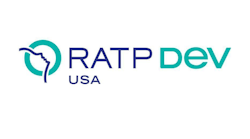Sepulveda Transit Corridor Partners selects RATP Dev to develop operations and maintenance component of its rail transit proposal
Sepulveda Transit Corridor Partners (STCP) has selected RATP Dev to develop the operations and maintenance component of its rail transit proposal to ease congestion on the I-405 (Sepulveda) corridor between Los Angeles' San Fernando Valley and Westside.
As part of the Los Angeles County Metropolitan Transportation Authority's (L.A. Metro) Sepulveda Transit Corridor Project, STCP is developing two high-capacity rail options to provide fast, green and connected transit taking riders between the Valley and the Westside, including a station in the heart of the UCLA campus in less than 20 minutes.
That speed, as well as trains arriving every 2.5 minutes (and every 90 seconds when needed), is to be achieved through the use of a proven automated rail technology.
"We are excited to work with RATP Dev, one of the most innovative and experienced transit operators in the world," said Derya Thompson, co-director of STCP. "From planning to construction, and now for operations and maintenance of the completed line, we have assembled an infrastructure 'Dream Team' to propose a fast, safe, green and connected transit solution for people living and working in the valley, on the west side and across southern California. It is an honor to work on a transit solution that can help millions of people spend less time on the road and more time with their families."
"STCP proposes a high quality, time-efficient and well-connected transit solution for the Sepulveda Corridor, which has the potential to dramatically change the commute of millions of people. We are proud to have been selected as STCP's operations and maintenance partner. RATP Dev brings to Los Angeles more than 30 years of experience managing fully automated transit systems accident-free and with headways as low as 90 seconds," said Mehdi Sinaceur, RATP Dev's COO and senior vice president for the Americas.
STCP's rail options – referred to by L.A. Metro as Alternative 4 and 5 – are designed to reduce freeway and street congestion, air pollution and climate change-causing emissions. It is designed to create good-paying local construction jobs and long-term operations, maintenance jobs and increase mobility and economic opportunity across the region.
Alternative 4 and 5 are both within the same travel corridor. Alternative 4 would run on an elevated trackway between the Van Nuys/Metrolink station and a station at Sepulveda and Ventura. Alternative 5 would run entirely below ground except for the northern end of the line at the existing above ground Van Nuys/Metrolink Station. STCP is developing both alternatives; the decision on which to pursue is L.A. Metro's.
Alternative 4 and 5 would be integrated with L.A. Metro's current and future transit system, with direct connections to the D, E and G Lines (also known as the Purple, Expo and Orange Lines), Metrolink, Amtrak, multiple bus lines and bike lanes.
STCP's options are one of two Pre-Development Agreement (PDA) proposals selected by L.A. Metro for its Sepulveda Transit Corridor Project.
RATP Group's first experience in automated rail for transit was in 1952. It has managed fully automated transit systems since 1991 and launched the world's first fully automated high-capacity metro, Paris Line 14, in 1998. RATP Group converted Paris Line 1, a century-old conventional metro line partially traveling under the Champs-Elysees with connections to Louvre Museum, into a fully automated system in 2012. The same type of conversion for Paris Line 4 is expected to be completed in 2023.
During the project design development, RATP Dev will provide Early Operator-Maintainer consultancy services, including design review and operations and maintenance systems development. If STCP's solution, as refined through the PDA process, is selected by the L.A. Metro Board as the locally preferred alternative, RATP Dev would help STCP manage operations and maintenance on the built rail line.



